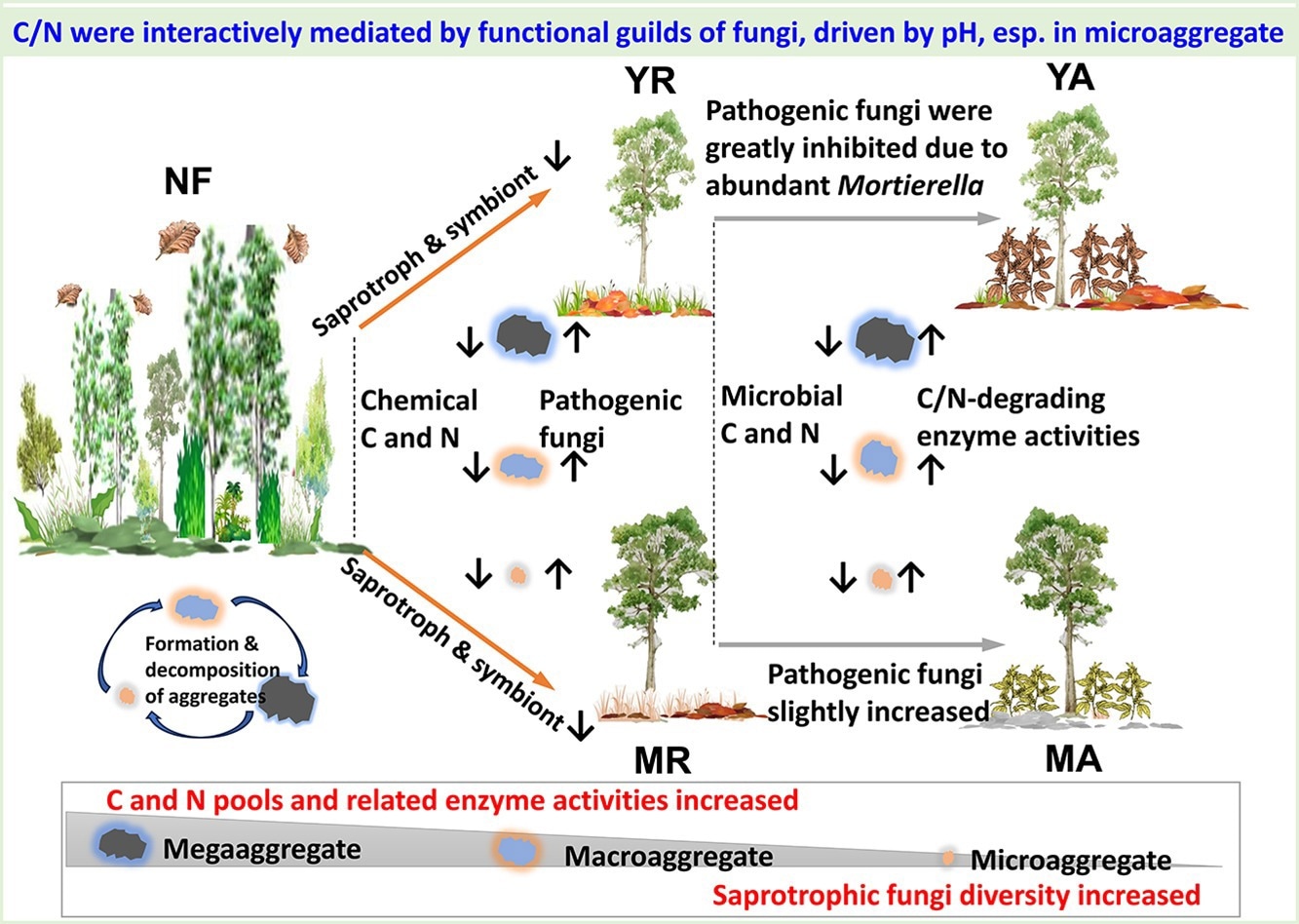One of the most serious threats to soil biodiversity and ecological functioning is land use change. The most significant threat to biodiversity is tropical deforestation to construct monoculture cash tree plantations. However, it is unknown how such a change influences aggregate soil carbon (C) and nitrogen (N) dynamics driven by fungal communities.
 Land use change alters carbon and nitrogen dynamics mediated by fungal functional guilds within soil aggregates. Image Credit: LIU Chenggang
Land use change alters carbon and nitrogen dynamics mediated by fungal functional guilds within soil aggregates. Image Credit: LIU Chenggang
Researchers from the Xishuangbanna Tropical Botanical Garden (XTBG) of the Chinese Academy of Sciences evaluated the effects of tropical land use change on soil fungal functional guilds and the implications for soil C and N cycling processes at the aggregate level in a study published in Science of The Total Environment.
Researchers in Xishuangbanna, southwest China, examined three soil aggregates from a natural forest, 12- and 24-year-old rubber monocultures and equivalent agroforestry systems to evaluate C and N fractions, fungal populations, enzymatic activity, and chemical characteristics.
They discovered that fungal functional guilds across aggregate sizes acted as a mediator between the differential effects of land use change on soil C and N dynamics. When tropical forests were turned into rubber monocultures, the C and N pools in all aggregates were typically decreased. In agroforestry systems, the biomass of microbial C and N decreased.
Different enzymes that degrade carbon and nitrogen responded differently to the conversion of forests, and their activity increased in agroforestry systems. The amounts of C and N pools and related enzyme activity rose as the size of the soil aggregate decreased.
Furthermore, when forests were cleared, harmful fungi proliferated at the expense of saprotrophic and symbiotic fungi. Fungal diversity was determined by soil aggregate size rather than composition, with microaggregates having the most diversity.
Regardless of land use type, fungal functional guilds had varying effects on C and N pools within aggregates, mostly influenced by soil pH. The researchers ascribe all of the discrepancies to changes in plant variety, soil characteristics, and agroforestry management.
Our study provides an important insight into the early establishment of agroforestry systems in tropical cash tree plantations due to the greater benefits in nutrient cycling and pathogen control.”
Chenggang Liu, Professor, Xishuangbanna Tropical Botanical Garden, Chinese Academy of Sciences
Source:
Journal reference:
Liu, C., et al. (2023). Land use change alters carbon and nitrogen dynamics mediated by fungal functional guilds within soil aggregates. Science of The Total Environment. doi.org/10.1016/j.scitotenv.2023.166080